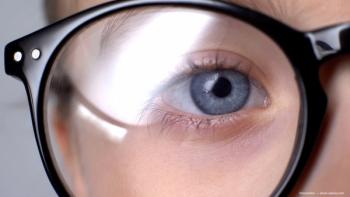
- Ophthalmology Times: May 2022
- Volume 47
- Issue 5
Seasonal allergies: Common trigger for dry eye flares
Short-term steroid use can alleviate patient discomfort.
In patients with dry eye disease (DED), seasonal allergies are likely to trigger an exacerbation or flare of their DED symptoms. These patients will often complain of runny or teary eyes, redness, itchiness, burning, a gritty sensation, as well as symptoms that affect the adjacent regions such as sinus tenderness and a stuffy, runny nose.
In my clinical experience, most have these allergy-induced dry eye flares during the spring and summer when pollen, the biggest inciting factor, is being dispersed by blooming flowers and trees. A complicating element is that patients often take oral antihistamines to treat their ocular symptoms which can lead to excessive drying and in turn, a worsening of underlying DED.
A dry eye flare is defined as an acute episode of worsening symptoms where inflammation has disrupted the homeostatic balance within the tear film. This acute worsening of symptoms can last from a few days to a couple weeks. Most commonly, a dry eye flare is caused by a trigger that activates a pro-inflammatory cascade on the ocular surface.1-4
Along with seasonal allergies, other triggers include perennial allergies such as pet dander, dust, and mold; excessive screen time; contact lens overwear; and vented air from heat or air conditioning.5-13
DED is a multifactorial condition with the two main pathways being a decrease of healthy tear production or increased tear evaporation from the ocular surface.1-4 If any one of a number of instigating factors is collectively added, there can be a heightened inflammatory response on the ocular surface which can affect both of the DED pathways leading to the exacerbation of DED.1-4
Dry eye flare: What to look for
When I educate patients about dry eye flares, I let them know that a flare is a symptomatic acute episode during a previously quiescent period. Many of my more severe dry eye patients will be on baseline therapy such as cyclosporine or lifitegrast (Xiidra; Novartis), and for the most part, their symptoms are well controlled. When there is a trigger such as seasonal allergies, it puts them into a pro-inflammatory state, and they develop a sudden onset of acute symptoms.
In other words, these patients are quite miserable. They will not say, "Doctor, I think I'm experiencing a dry eye flare," but they will say, "My medications don't seem to be working anymore. I'm getting these symptoms again." That is when I take the opportunity to educate them, reminding them that although there is no cure for DED, it is normal to experience fluctuations in symptoms, and we can manage it together with therapy. I say your seasonal allergies are pushing your eyes into overdrive or a pro-inflammatory state.
Subsequently, my next step would be to tell them that medication is needed to control this acute flare. Treatment with an approved fast-acting, low-dose topical steroid can provide rapid relief of symptoms—exactly what these patients are looking for.
How to treat
Eysuvis (loteprednol etabonate ophthalmic suspension 0.25%; Kala Pharmaceuticals) is the first FDA approved corticosteroid for the short-term treatment of the signs and symptoms associated with DED. The drop has a novel formulation utilizing AMPPLIFY, Kala’s proprietary mucus-penetrating particle technology. Nanoparticles of ~300 nm in diameter are coated to facilitate their penetration through the mucus barrier. This controlled delivery system enables the drop to spread more uniformly across the ocular surface.
I like to use it in these patients because the quick onset of action means noticeable, rapid relief, plus they only need to use it for a short period of time—no more than 2 weeks. Those DED patients on chronic medication can continue while supplementing with Eysuvis. Patients should be educated that seasonal changes or other triggers mentioned earlier may cause them to have recurrent episodes of dry eye flares that need to be treated with a short course of a low-dose steroid.
As we know, many of us worry about intraocular pressure (IOP) elevation secondary to steroid use. I reassure patients that the drop has a favorable side effect profile, and because of its low concentration, I am comfortable with episodic dosing throughout the year. In fact, loteprednol etabonate ophthalmic suspension 0.25% was studied in more than 2,800 DED patients.14-16
The drop was well-tolerated and illustrated a low incidence of IOP increase similar to vehicle. In treatment and vehicle groups, respectively, 0.2% and 0% of subjects experienced a ≥10 mm Hg increase from baseline resulting in an IOP measurement of ≥21 mm Hg at any post-baseline visit up to 29 days.14-16 This IOP safety data provides me with a boost in confidence to prescribe Eysuvis in my DED patients.
For compliant patients who have a good understanding of their dry eye disease, I have them keep their loteprednol etabonate ophthalmic suspension 0.25% handy. I advise them to restart their medication for a short course when they notice a dry eye flare. It is normal for patients to experience multiple flares throughout the year. For some, it may be more or less frequent. These inflammatory spikes of acute exacerbation occur in about eight out of 10 dry eye patients, and about half of DED patients experience flares only without continuous symptoms between four to six times per year.17-20
Advising on antihistamine use and contact lens wear
A number of allergy patients will be taking oral antihistamines. If I see that they are having signs and symptoms of ocular surface disease, I will tell them to hold off on their oral antihistamine because they can worsen DED. Depending on the severity of their systemic allergy symptoms, I will talk to their allergy specialist to determine if they can switch to a nasal decongestant or other nonsystemic therapy. The best solution is always to avoid the allergy trigger and make other appropriate environmental and/or lifestyle changes.
I advise contact lens wearers to discontinue use when they are experiencing a dry eye flare. I prefer they not use eye drops with contact lenses to avoid problems such as build up, debris, or denaturing the lens material.
Plus, lens wear can add to or be a culprit of their dry eye flare due to the mechanical rubbing on their eyes and oxygen deprivation. While they take a contact lens holiday, they can also start a short course of Eysuvis to rapidly relieve their symptoms. They can then consider slowly going back into their contact lenses; however, I recommend decreasing wear time as much as possible and no more than 8 hours per day. We should always ensure patients are wearing lenses with optimal oxygen permeability with daily disposables as an ideal option.
Stay ahead of the game
For most of our DED patients it is not a matter of if, but when they will have an acute exacerbation of symptoms—dry eye flares. Fortunately, we have a fast-acting treatment to lessen their misery.
Dagny Zhu, MD, is a cornea, cataract, and refractive surgeon, and Medical Director and Partner at NVISION Eye Centers in Rowland Heights, California.
[email protected]
Zhu acknowledged no financial interest in the products or companies mentioned.
References
1. Pflugfelder, SC, de Paiva, CS. The pathophysiology of dry eye disease: what we know and future directions for research. Ophthalmology. 2017;124:S4–S13.
2. Lienert JP, Tarko L, Uchino M, et al. Long-term natural history of dry eye disease from the patient's perspective. Ophthalmology. 2016;123(2):425-433. doi: 10.1016/j.ophtha.2015.10.011.
3. Perez VL, Stern ME , Pflugfelder SC. Inflammatory basis for dry eye disease flares. Exp Eye Res. 2020;201:108294. doi: 10.1016/j.exer.2020.108294
4. Craig, JP, Nichols, KK, Akpek, EK, et al. TFOS DEWS II definition and classification report. Ocul Surf. 2017;15:276–283.
5. Rolando, M, Zierhut, M, Barabino, S. Should we reconsider the classification of patients with dry eye disease? Ocul Immunol Inflamm. 2021;29(3):521-523. DOI: 9.1080/09273948.2019.1682618.
6. Amparo, F, Dana, R. Web-based longitudinal remote assessment of dry eye symptoms. Ocul Surf. 2018;16:249–253.
7. Iyer, JV, Lee, SY, Tong, L. The dry eye disease activity log study. ScientificWorldJournal. 2012;2012: 589875.
8. Karakus, S, Ag.rawal, D, Hindman, HB, et al. Effects of prolonged reading on dry eye. Ophthalmology. 2018;125:1500–1505.
9. Kim, Y, Paik, HJ, Kim, MK, et al. Short-term effects of ground-level ozone in patients with dry eye disease: a prospective clinical study. Cornea. 2019;38:1483–1488.
10. Ousler, GW, Rimmer, D, Smith, LM, et al. Use of the controlled adverse environment (CAE) in clinical research: a review. Ophthalmol Ther. 2017;6:263–276.
11. López-Miguel, A, Tesón, M, Martín-Montañez, V, et al. Dry eye exacerbation in patients exposed to desiccating stress under controlled environmental conditions. Am J Ophthalmol. 2014;157:788–798.
12. Teson, M, Gonzalez-Garcia, MJ, Lopez-Miguel, A, et al. Influence of a controlled environment simulating an in-flight airplane cabin on dry eye disease. Invest Ophthalmol Vis Sci. 2013;54:2093–2099.
13. Fernandez, I, Lopez-Miguel, A, Enriquez-de-Salamanca, A, et al. Response profiles to a controlled adverse desiccating environment based on clinical and tear molecule changes. Ocul Surf. 2019;17:502–515.
14. Gupta PK, Venkateswaran N. The role of KPI-121 0.25% in the treatment of dry eye disease: penetrating the mucus barrier to treat periodic flares. Ther Adv Ophthalmol. 2021;13:25158414211012797. doi: 10.1177/25158414211012797. eCollection.
15. Korenfeld M, NIchols KK, Goldber D, et al. Safety of KPI-121 ophthalmic suspension 0.25% in patients with dry eye disease. Cornea. 2021;40(5):564-570. doi: 10.1097/ICO.0000000000002452.
16. Holland E. Nichols KK, Foulks GN, et al. Safety and efficacy of KPI-121 ophthalmic suspension 0.25% for DED in four RCTs. Paper presented at: AAO 2020; Nov 13-15, 2020; virtual meeting.
17. Brazzell RK, Zickl L, Farrelly J, et al. Prevalence and characteristics of dry eye flares: a patient questionnaire survey. Presented at: AAO 2019: Oct 12-15, 2019. San Francisco, Calif.
18. Brazzell RK, Zickl L, Farrelly J, et al. Prevalence and characteristics of symptomatic dry eye flares: results from patient questionnaire surveys. Poster presented at: AAOPT 2019: October 23-27, 2019; Orlando, FL.
19. 2018 Study of Dry Eye Sufferers. Conducted by Multi-sponsor Surveys, Inc.
20. 2020 Study of Dry Eye Sufferers. Conducted by Multi-sponsor Surveys, Inc.
Articles in this issue
over 3 years ago
Major advances in AMD address urgent, unmet need among patientsover 3 years ago
Bimatoprost SR may offer long-term lowering of IOPover 3 years ago
A portable solution for high-definition slit lamp imagingNewsletter
Don’t miss out—get Ophthalmology Times updates on the latest clinical advancements and expert interviews, straight to your inbox.



















































.png)


